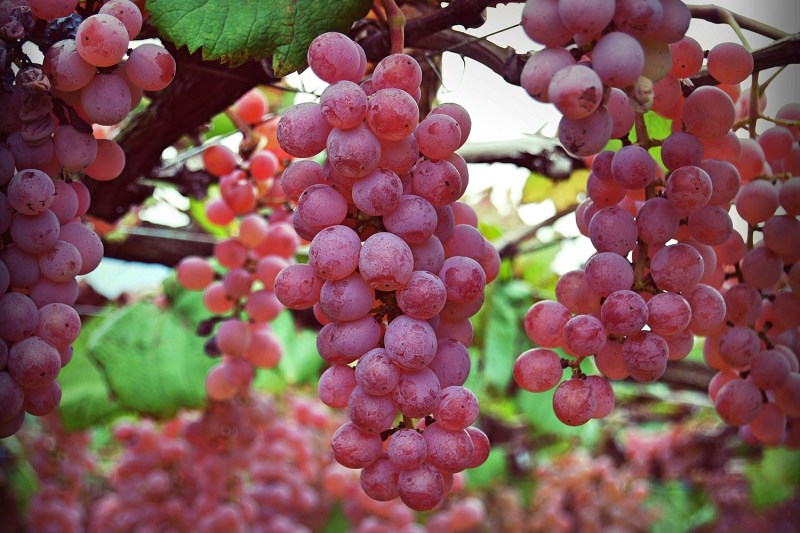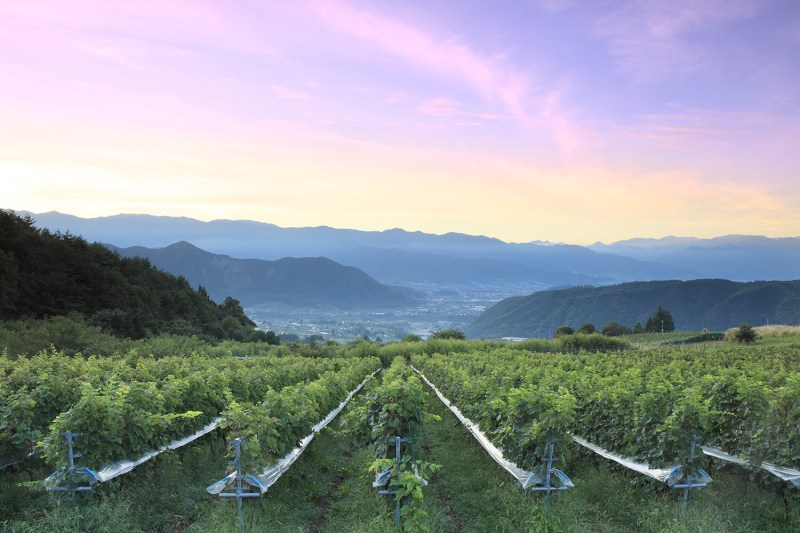When you think of Japanese wine, the mind lunges straight for sake. But climate change and a new band of winemakers is looking to rattle that perspective.
Beer and sake consumption is slowing in The Land of the Rising Sun and locals are looking for clean wines to balance out local cuisine. From a winemaking standpoint, it’s not always easy, which is part of the reason Japan has taken so long to really enter the global wine conversation.
When the Japanese consider vineyard plantings and subsequent management, they take into account major challenges like humidity, typhoons, steep and prone-to-erosion slopes, and snow. That’s why hybrids have been popular as they can usually weather the collective storm of conditions. Yet, in places like the Yamanashi Prefecture, Nagano, and Hokkaido especially, there’s growth in producers as well as in indigenous varieties and familiar types like Chardonnay.

Japan’s only native grape is the Koshu, increasingly appreciated for its delicate nature and peach flavors. It produces a soft-spoken wine that nicely counters some of the country’s louder dishes. As winemakers experiment more with seemingly suitable varieties like Pinot Noir and promising cross-breeds like Muscat Bailey A, we may begin to see some interesting wine coming out of Japan.
Grape cultivation and wine production, to a pretty minimal extent, dates back to the 8th century here. It was popularized by the Jesuits in the 16th century as they brought in new plantings and insisted on drinking the stuff. But really, the Japanese mostly ignored what they called “grape liquor” until the 1970s. That’s when a few producers saw opportunity in a Japanese interest in western things, which included European and American wines.

To this day, the lion’s share of what’s available in Japan is imports from the more established wine-producing nations. The creative new class of area vintners operates under a large shadow cast by conglomerates like Suntory, which typically mix a bit of local fruit with a lot of bulk fruit from other countries and slap a wine label on it. Fortunately, legislation in the last couple of years has made it much more difficult to label something as Japanese wine unless it’s purely that. Plus, local growers and governments are working on origin regulations and appellation designations like we see in the states of France.
There’s a lot to be excited about. A major sign of potential with wine often comes in the form of endorsement from a place that knows best. France has already shown some interest in Japan. Just last May, famed producer Domaine de Montille planted Pinot Noir and Chardonnay in southern Hokkaido, a serious stamp of approval. Undoubtedly, it also points to the larger global warming trend, which has already resulted in a recent sparkling wine hotbed in England, to name one of many examples.

Such attention will lead to more marketing, which in turn will lead to more production and exports to places like the U.S. Curious somms are already showcasing Japanese wines at trade tastings and industry gatherings, convinced there’s something brewing there. There are exciting labels hard at work changing the game, like MGVs in Yamanashi and Domaine Takahiko in Hokkaido.
The focus is in Yamanashi, home to the largest concentration of vineyard and wineries, with stunning terrain and Mt. Fuji perpetually on the horizon. It’s one of the most scenic areas of Japan and is looking to draw tourists in for not only mountain views and cherry blossoms, but solid local wine. Presently, there are more than 100 producers, a mix of both hillside estates and urban outfits like Kurambon.
Look out for pours of Japanese wine at your favorite restaurant or wine shop in the near future. You’re likely to see more and more pop up at natural wine bars and places that prefer green winegrowing techniques, as the newest generation of Japanese winemakers appears to take such things quite seriously.


